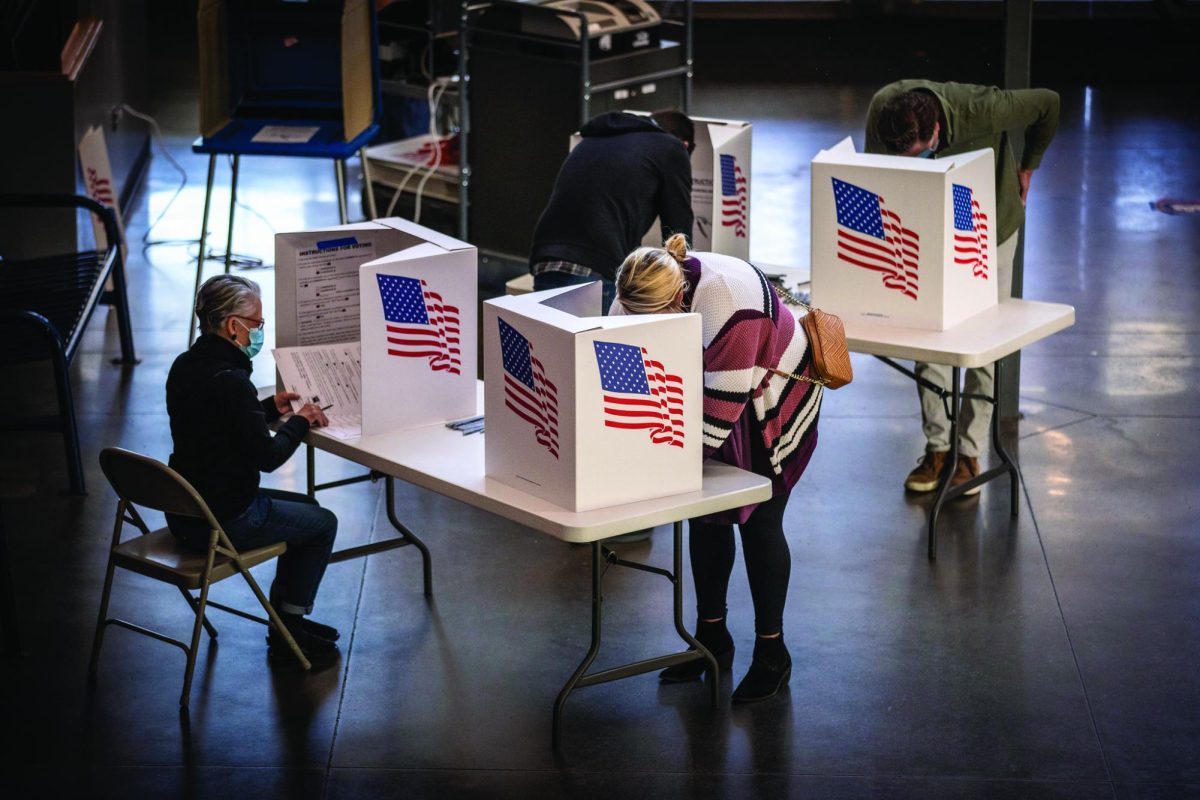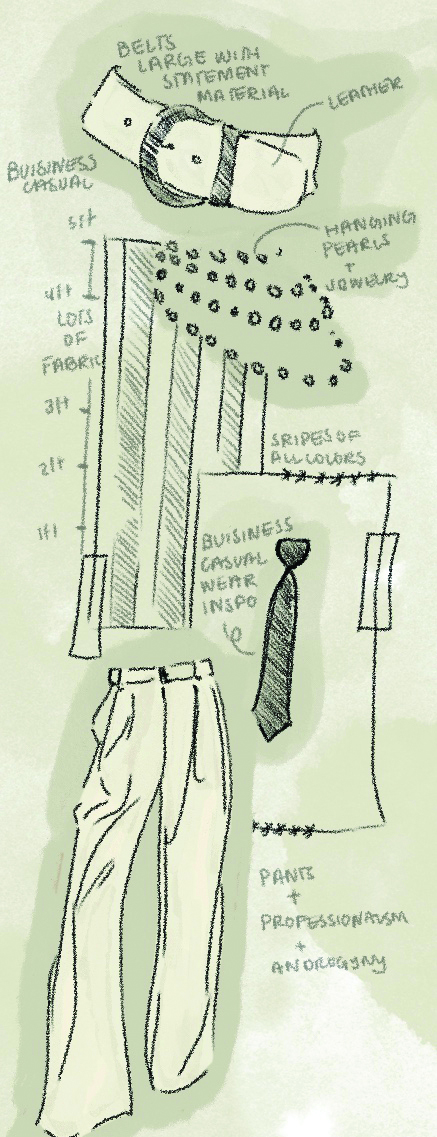Cafeteria food has never been described as delicious. On television, children are never excited to line up for lunch in the cafeteria, and students let out a universal groan when they see what has been dished onto their trays.
In actuality, a typical meal in an LA public Middle School cafeteria used to consist of a mini-pizza or a set of chicken nuggets with french fries, typically served with your choice of flavored milk. Nutritionally, this was the equivalent of a mixture between the colorless, tasteless food seen in movie cafeterias and a McDonald’s Happy Meal (without the toy): packaged, high in fat and high in cholesterol.
Needless to say, many kids would go days without eating at school, not because of the lack of nutritional content but because the food didn’t taste good.
Auxiliary Services Manager Clinton Oie sends his daughter to Third Street School.
“Sometimes my daughter would go without lunch because she said she didn’t like it,” he said.
For the past few years, celebrity chef Jamie Oliver has called international attention to the role school lunches play in rising obesity rates. After successfully changing cafeteria food in the small town of Huntington, West Virginia on the first season of ABC’s Jamie Oliver’s Food Revolution, cameras followed the chef for a second season as he attempted to revamp menus in a school district with 77 times as many students: Los Angeles.
Despite major setbacks and bureaucratic frustrations, in Apr. 2011, the LAUSD (Los Angeles Unified School District) Board, with the support of new Superintendent John Deasy, was finally swayed by Oliver’s attempt to ban flavored milks because they contain more sugar per ounce than a can of soda.
On the heels of this movement, LAUSD decided at the end of the 2010-11 school year to get rid of corn dogs, chicken nuggets, and other fried and breaded food in place of a new menu with vegetarian options and sushi.
Prior attempts to make the food available at public schools in Los Angeles were also beset by challenges. In 2001, former LAUSD Chief of Staff to School Board Member Marlene Canter Andrew Glazier proposed that all sodas be banned from school cafeterias in response to student activism at Venice High School.
Though it took three long years, Glazier’s “soda motion” was finally passed in 2004, officially banning the high-fructose-corn-syrup-laden drinks from Los Angeles cafeterias.
“I think it’s our responsibility to make sure the lunches students consume are healthy,” Glazier said
.IS MONEY THE DECIDING FACTOR?
Catered by Culinart, a catering company that provides healthy meals to school cafeterias, Marlborough’s Café M serves everything from tofu and salad to bacon-wrapped hot dogs and sushi, with chefs making the food right in front of us. According to Oie, some private schools don’t even have cafeterias as nice as ours.
On the other hand, in Los Angeles public schools, 671,648 kids are fed 180 days a year for about 80 cents a meal. There is no chef standing before a grill waiting to take each student’s order. In total, 121 million meals are served per year, each for less than the price we pay for a bottle of water in Café M.
In our current recession, the gap between rich and poor parallels the divide between healthy and organic and fried and convenient. In households across the country, less-affluent families are more likely to choose McDonald’s over groceries at Whole Foods, simply because they don’t have the means to afford the healthy alternatives.
In LAUSD, 75% of all students come from homes below the poverty level, so for the majority of kids, lunch time may be the only opportunity for a nutritious meal, or a meal at all.
“Cheaper food is convenient, filling and cheap,” Science Department Head Jennifer Garrison Ross said. “In general, one can buy a larger quantity of large calories at a low quantity for a cheaper price than you can buy high quality food. If money is a limiting factor, then you’re going to buy low quality foods.”
This appears to be the case in the difference between lunch options for private and public schools. In a recent article in LA Weekly entitled, “Why Los Angeles Schoolkids Get Lousy Meals,” reporter Gendy Alimurung explains that parents have long been “irate” over the quality of food served in cafeterias.
In the past decade, school districts across Los Angeles County have tried to provide meals both delicious and nutritious, but those that have succeeded. typically have more money to spend per student than LAUSD does.
Glazier found money to be a major road-block when he first tried to eliminate sodas from schools. Students weren’t the only ones hesitant to see sodas disappear from their campuses; teachers and administrators were, too.
“Vending machines funded student activities, proms, etc.,” Glazier said. “It was definitely a hit to the school’s revenue when sodas were gone, even if we were trying to replace them with water and sports drinks.”
Just minutes from Marlborough, Third Street Elementary School attracts a socioeconomically diverse group of students. Those students whose families are below the poverty line qualify for free and reduced breakfast and lunch from the cafeteria.
However, as a LAUSD school, Third Street has to work with a tight budget. (All LAUSD schools are given a certain amount of money to set up contracts with outside food providers.) Though they try to offer healthy options, the children still receive packaged food.
“The institution is mandated to be as healthy as possible, even though the options they have are packaged, pre-made food,” Oie said.
IN THE END, IT’S ALL UP TO YOU
Although affluence is a large factor in determining the consistent quality of health in food and LAUSD must work within a tight budget, the quality of a Violet’s diet is now in no way drastically more healthy than that of a girl at a public school.
The meals of pita on hummus, tortilla salad and spinach tortellini which have replaced peanut butter and jelly sandwiches, meat loaf and cheeseburgers in LAUSD cafeterias this year are nutritionally comparable to the food served in Café M.
Though Culinart’s food may not be packaged, many Marlborough girls agree that not every item on the menu at Café M is good for you.
“While the food at Café M is delicious, I find that I have to try much harder to make healthy choices,” Stephanie’12 said.
While wealth provides a health advantage, money certainly doesn’t guarantee a balanced meal, especially when Café M serves snacks that have been banned from LAUSD cafeterias due to high fat or sugar content.
“I think the absolute best thing we have in our cafeteria is the salad bar,” Oie said, adding that he appreciates the fact that we are able to serve a nutritious option with a multitude of toppings.
In addition, this year Meatless Mondays and Vegan Fridays have been introduced to promote sustainable eating and cut down on wasted energy. But that doesn’t necessarily make us “healthier” than schools in LAUSD.
Jumbo sized cookies are baked and sold almost every day. Brownies and large Rice Krispie treats are situated at each check-out cashier, along with a shelf of grab-and-go snack bags high in salt.
At Culver City High School (CCHS), chips have been replaced by either a baked alternative or Pepperidge Farm Goldfish. Soda has been replaced by fruit juice, and even dessert has received a makeover.
“For dessert during lunch, they’ll serve baked peaches drizzled with cinnamon,” CCHS junior Kourtney Brodnax said. And even though many of the lunches are delivered pre-made to the school, they are welcomed as a healthy alternative. “Unfortunately, our food is packaged and then made in our cafeteria, but still, it’s much healthier than fast food restaurants,” Brodnax said.
On both Marlborough and Third Street School’s menus, sweet potato fries are a student favorite. However, for every six ounces of fries, Café M’s dish is 35 grams of carbohydrates while Third Street’s is 25 grams.
“There is such a thing as healthy packaged food,” science instructor Lisa Ellis said, adding that she believes the LAUSD is completely transforming school lunches. “Packaged doesn’t equal processed. I would say to avoid overly-processed food. The chicken nugget is a long way from the chicken.”
While money is a big factor in nutrition, ultimately the most important elements of healthy eating are the individual choices we make throughout our day.
“I think the LAUSD is trying really hard,” Ellis said. “I’d give them credit for the effort they’re putting into this.”












